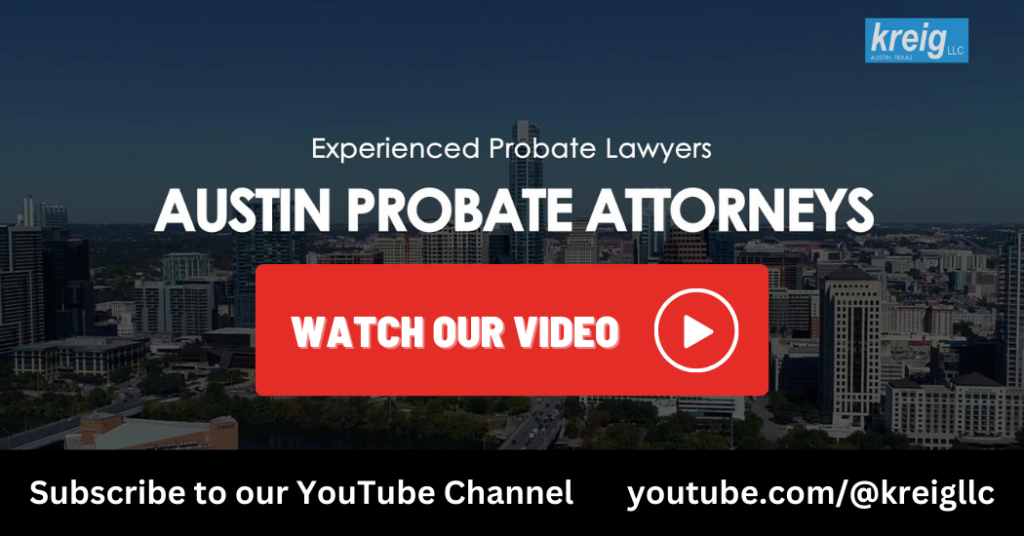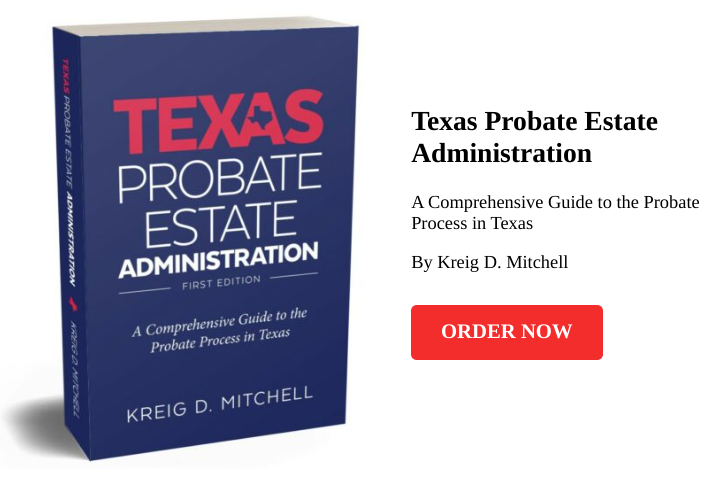Someone dies. A family member signs a release agreement giving up their claims to the estate. Later, that same person discovers what they believe is a newer will naming them as the sole beneficiary. Can they ignore the release they signed and pursue their claim to the estate?
This scenario plays out more often than you might think in Texas probate proceedings. Family members sometimes sign releases under pressure or based on incomplete information. Later, they want to challenge those releases when new circumstances come to light. The question becomes whether Texas law allows someone to relitigate the validity of a release after a court has already ruled on it.
The Texas Supreme Court addressed this exact situation in Womble v. Atkins, 160 Tex. 363, 331 S.W.2d 294 (Tex. 1960). This case provides an opportunity to examine how the doctrine of res judicata operates in Texas probate proceedings and what it means for parties who want to challenge release agreements after losing on that issue once before.
Facts & Procedural History
Charles Thomas Tatum executed a will in 1945. After his death, that will was admitted to probate. Lee Atkins and O.E. Carlisle qualified as independent executors under the 1945 will.
Nettie Womble later came forward claiming that Tatum had executed a holographic will on December 9, 1952. This later will allegedly named her as the sole beneficiary of the estate. She filed an application to set aside the probate of the 1945 will and probate the 1952 will instead.
The executors moved to dismiss Nettie’s application. They pointed to a release that Nettie had signed on August 17, 1953. That release stated that she gave up all claims against the Tatum estate. The release appeared valid on its face. The executors had paid Nettie substantial consideration in both money and land in exchange for her signature.
Both the county court and district court denied the executors’ motion to dismiss. The Court of Civil Appeals reversed. That court held that Nettie had no interest in the estate because the release barred any claims she might have had. The court specifically found that Nettie should have challenged the validity of the release during the probate proceedings when the executors first raised it as a defense. Because she failed to do so, she waived any defenses to the release.
Nettie then filed a separate lawsuit in district court. This time, she sought to set aside the release on the grounds that it lacked valid consideration and was procured by fraud. She argued that because the 1952 will made her the sole beneficiary, she already owned everything in the estate. Therefore, the executors had no right to demand a release from her or pay her with property that already belonged to her.
The district court granted summary judgment against Nettie. The Court of Civil Appeals affirmed. Both courts held that the earlier Court of Civil Appeals decision operated as res judicata to bar Nettie from relitigating the validity of the release.
What Does It Mean to Have an “Interest” in a Texas Estate?
Texas law doesn’t allow just anyone to involve themselves in probate proceedings. The Texas Estates Code requires that a person have an actual interest in an estate before they can offer a will for probate or contest a probate proceeding.
An “interest” means that the person stands to gain or lose something based on the outcome of the probate. Beneficiaries named in a will have an interest. Heirs who would inherit under intestacy laws have an interest. Someone with a contract claim against the estate might have an interest depending on the circumstances.
The interest requirement serves an important policy purpose. Without it, busybodies could tie up estates in endless litigation even though they have no stake in the outcome. The requirement ensures that only people with something at stake can participate in probate proceedings.
When someone challenges another party’s interest in an estate, Texas courts require the challenging party to prove their interest before proceeding to the merits of their probate application. This creates a threshold question that must be resolved first.
How Does the Interest Requirement Work in Probate Proceedings?
The proper procedure requires trying the issue of interest separately and in advance of trying the substantive issues about the will’s validity. Several Texas cases established this rule long before Womble.
Consider how this works in practice. Someone files an application to probate a will. Another party objects and claims the applicant has no interest in the estate. The court must first determine whether the applicant has standing to proceed. Only after resolving that threshold question does the court move on to consider whether the will itself is valid.
This procedural sequence matters because it prevents parties without standing from forcing estates through expensive and time-consuming litigation. Estates can be closed more quickly when courts dismiss applications from parties who lack interest at the outset.
The burden of proof shifts once someone raises the interest question. Initially, the person filing the probate application doesn’t need to prove interest. However, once another party challenges their interest and presents evidence supporting that challenge, the applicant must come forward with evidence establishing their interest. The applicant cannot simply remain silent and hope the court overlooks the challenge.
What Happened When Nettie Faced the Release in the First Case?
When the executors moved to dismiss Nettie’s application to probate the 1952 will, they introduced the release as evidence. The release appeared valid on its face. It showed that Nettie had received substantial consideration. It contained clear language releasing all claims against the estate. The release effectively eliminated any interest Nettie might have had in the estate.
At that point, the burden shifted to Nettie. She needed to present evidence showing that the release was invalid. Perhaps she could have shown that she signed under duress. Perhaps she could have demonstrated fraud in the inducement. Perhaps she could have proven lack of consideration or mental incapacity.
But Nettie presented no such evidence during the hearing on the motion to dismiss. She filed no pleadings attacking the release. She offered no testimony or documents suggesting problems with the release. She essentially remained silent on the issue.
The trial court denied the motion to dismiss anyway. That was error. Without any evidence challenging the release’s validity, the trial court should have granted the motion. The release on its face barred Nettie from claiming any interest in the estate.
The Court of Civil Appeals corrected this error. That court reversed the trial court and dismissed Nettie’s application to probate the 1952 will. The court’s reasoning was straightforward: Nettie signed a valid release. The release eliminated her interest in the estate. Without an interest in the estate, she could not pursue probate of the will.
Did the First Court of Civil Appeals Decision Actually Determine the Release’s Validity?
This question became the heart of the second case. Nettie argued that the first Court of Civil Appeals decision only held that she couldn’t probate the 1952 will “until” she succeeded in setting aside the release. She claimed the court never actually determined whether the release was valid on the merits.
The Court of Civil Appeals rejected this argument. That court explained that it had indeed decided the validity of the release in the first case. The executors pleaded the release as a complete bar to Nettie’s application. They introduced evidence supporting the release. Nettie had the opportunity to challenge the release but failed to do so.
By failing to challenge the release when it was first raised, Nettie waived any defenses she might have had. The first court necessarily determined that the release was valid when it ruled that Nettie had no interest in the estate. That determination was essential to the judgment dismissing her probate application.
The court emphasized another point. Nettie could not evade the executors’ challenge to her interest by filing a separate lawsuit in a different court seeking to cancel the release. The county court (and on appeal, the district court) had jurisdiction to determine whether Nettie had an interest in the estate. That determination required deciding whether the release was valid. Once those courts exercised their jurisdiction and the Court of Civil Appeals affirmed, the matter was decided.
What Is Res Judicata and How Does It Apply Here?
Res judicata is a legal doctrine that prevents parties from relitigating issues that have already been decided. The doctrine serves important purposes. It promotes finality in litigation. It prevents harassment through repeated lawsuits. It preserves judicial resources by avoiding duplicative proceedings.
Texas recognizes two aspects of res judicata. The first is claim preclusion. This bars a party from bringing a second lawsuit on the same claim after a final judgment. The second is issue preclusion (also called collateral estoppel). This bars a party from relitigating an issue that was actually decided in a prior case, even if the second case involves a different claim.
Issue preclusion applies when three conditions are met. First, the issue must be identical to one decided in the prior case. Second, the issue must have been actually litigated and determined in the prior case. Third, the determination of that issue must have been necessary to the judgment in the prior case.
All three conditions were satisfied in Womble. The issue in both cases was whether the release was valid. That issue was actually litigated in the first case when the executors raised it and Nettie had the opportunity to contest it. The validity determination was necessary to the first judgment because the court could not decide whether Nettie had an interest in the estate without deciding whether the release barred that interest.
Could Nettie Argue That the County Court Lacked Jurisdiction?
Nettie tried one more argument. She suggested that county courts sitting in probate have limited jurisdiction. Perhaps the county court could not determine the validity of a release agreement. If the county court lacked jurisdiction to decide that issue, then its determination would not bind her in subsequent litigation.
The Texas Supreme Court rejected this argument. The court explained that county courts sitting in probate have jurisdiction to determine who has an interest in an estate. That determination necessarily includes deciding whether a release eliminates someone’s interest.
The court contrasted this situation with cases where a court of limited jurisdiction makes findings about matters entirely outside its authority. The court cited Loomis v. Loomis from New York as an example. In that case, a family court found that a marriage existed. However, only district courts had jurisdiction over divorce and marital status questions. Therefore, the family court’s finding about the marriage’s existence did not bind the district court in a later divorce case.
That situation differed fundamentally from Womble. The county court in Womble had clear jurisdiction to determine whether Nettie had an interest in the estate. Deciding the validity of the release fell squarely within that jurisdiction because the release directly affected her interest. The county court was not making findings about some unrelated matter outside its authority.
The court also noted that the case had been tried de novo in district court. The district court clearly had jurisdiction to determine all issues related to the release. When the Court of Civil Appeals affirmed the district court’s judgment, that appellate court exercised its full jurisdiction as well. Any argument about limited county court jurisdiction became moot once the case reached district court and then the Court of Civil Appeals.
What About Nettie’s Attempt to Distinguish Between Different Types of Claims?
In the Texas Supreme Court, Nettie tried to shift her position. She argued that even if the release barred her from probating the 1952 will, perhaps she had other claims against the estate. Maybe she had provided services to the decedent. Maybe she had some other basis for claiming money from the estate that didn’t depend on the will.
The Supreme Court found this argument unpersuasive for several reasons. First, Nettie’s pleadings in the second case never mentioned any specific claim other than her claim under the 1952 will. Her petition discussed only her status as the sole beneficiary under that will. She never pleaded that she had provided services or had any other independent claim.
Second, even if Nettie had pleaded another claim, it would not save her case. The fundamental problem remained that she signed a release giving up “any and all claims of every kind and character” against the estate. That broad language covered any claim she might have had, not just her claim under the 1952 will.
Third, Nettie never offered to return the consideration she received for signing the release. The release recited that she received substantial money and land in exchange for giving up her claims. If she wanted to rescind the release, basic equity principles would require her to return what she received. Her petition was silent on this point.
The court noted that Nettie’s theory seemed to be that she didn’t need to return the consideration because the consideration came from property that already belonged to her under the 1952 will. This circular reasoning assumed the very thing she needed to prove: that the 1952 will was valid and made her the sole owner of the estate. The first Court of Civil Appeals had already determined that she could not establish her interest in the estate because of the release. She could not bootstrap her way around that determination by claiming the consideration was paid with her own property.
Why Did the Supreme Court Refuse to Consider New Theories on Appeal?
The Supreme Court emphasized that Nettie had changed her position significantly between the lower courts and the Supreme Court. In the Court of Civil Appeals, she focused on arguing that the first judgment was not res judicata because it was supposedly just a jurisdictional dismissal. In the Supreme Court, she tried to argue that she should be allowed to pursue other claims even if the release barred probate of the will.
The Supreme Court declined to reverse the Court of Civil Appeals’ judgment based on a theory that Nettie never presented to that court. Appellate courts review what happened in the lower courts. They don’t reverse judgments to allow parties to amend their pleadings and assert entirely new causes of action that were never before the lower court.
This principle protects the integrity of the appellate process. If parties could raise completely new theories for the first time in the highest court, it would bypass the intermediate courts and prevent proper development of the record. The opposing party would have no opportunity to respond through evidence or argument at the trial level.
The Supreme Court noted that even if it were to reverse and remand, Nettie would only have the opportunity to pursue claims consistent with her existing pleadings. Her pleadings asserted only that she was the sole beneficiary under the 1952 will and that the release was invalid. Those pleadings did not set up any independent claim for services or any other basis for recovery unrelated to the will.
The Takeaway
Womble v. Atkins establishes that Texas courts will strictly enforce the doctrine of res judicata in probate proceedings. When a party challenges someone’s interest in an estate by presenting evidence of a valid release, that person must immediately come forward with any defenses to the release. They cannot remain silent, lose on the interest question, and then file a separate lawsuit attacking the release.
The case shows that determining a party’s interest in an estate is a decision on the merits, not a preliminary procedural ruling. Once a court with proper jurisdiction determines that a release is valid and eliminates a party’s interest, that determination binds the party in all future proceedings. The party cannot relitigate the release’s validity even when seeking different relief or asserting different claims.
This holding protects estates from endless litigation. It prevents parties from making multiple attempts to set aside releases or other agreements after losing once. Estate administration can proceed to conclusion without the constant threat that someone will file yet another lawsuit challenging agreements that have already been upheld. For independent executors and estate beneficiaries, Womble provides assurance that probate determinations will stick once they become final.
Do you need help with a probate matter in Austin or the surrounding area? We are Austin probate attorneys. We help clients navigate the probate process. Call today for a free confidential consultation, 512-273-7444.
Our Austin Probate Attorneys provide a full range of probate services to our clients, including helping with probate administrations. Affordable rates, fixed fees, and payment plans are available. We provide step-by-step instructions, guidance, checklists, and more for completing the probate process. We have years of combined experience we can use to support and guide you with probate and estate matters. Call us today for a FREE attorney consultation.
Disclaimer
The content of this website is for informational purposes only and should not be construed as legal advice. The information presented may not apply to your situation and should not be acted upon without consulting a qualified probate attorney. We encourage you to seek the advice of a competent attorney with any legal questions you may have.




